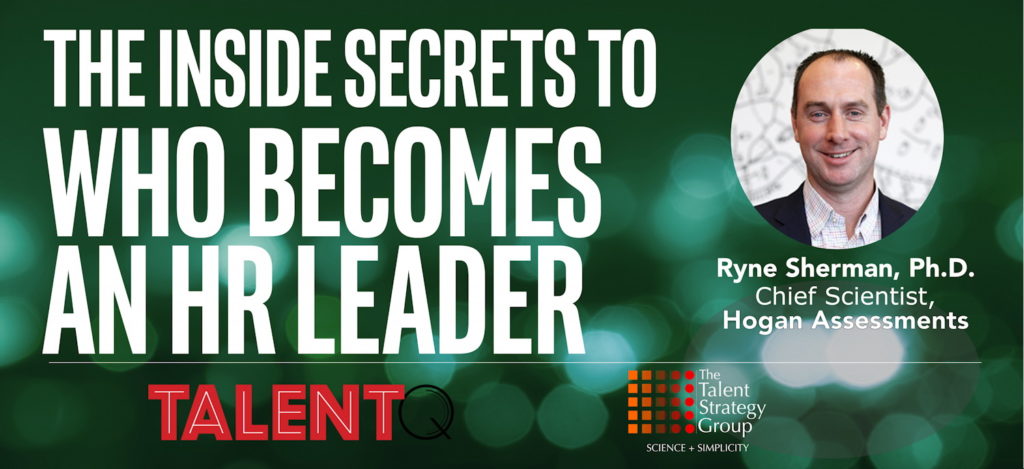Please enter your email in order to download this publication.
By Marc Effron, President, Talent Strategy Group
The greatest resistance to implementing new talent management practices often comes from within HR. We can’t be more effective as a function until we stop holding each other back from success.
As you grab a can of PowerAll energy drink from the break-room shelf, you allow yourself a slight smile. Your newly designed talent process will launch next week and you’re quite confident that it will be successful.
You’ve seen the mistakes that talent leaders commonly make when launching a new process and you’ve worked hard to avoid them. You’ve convinced your CEO to be an advocate for the process – he’s even filmed a video to kick-off the communication effort.
The new process better supports your company’s recently changed culture and aligns perfectly with its business strategy.
Your SVP HR has continually reinforced to her team that building great talent is her primary concern. The new process even fully accomplishes one of the HR group’s four strategic goals.
The HR leadership team has been involved in the entire design process and many design elements reflect their specific preferences. Your team has created training for the organization and HR, along with a support site with additional materials. If this doesn’t work, you say to yourself, it’s not for lack of preparation!
You lift the tab on the PowerAll can as the HR leader for EMEA, Susie Smitters, walks into the break-room.
“You look happy today!” she says, loading a pod into the coffee machine.
“I don’t want to be overconfident,” you reply, “but I feel good about our talent process launch next week.”
“Right,” she says casually, “I’ve been meaning to mention that we’re going to wait until next year to launch that in EMEA. You know how it is – lots going on.”
Talent management’s success relies largely on the human resource business partner (HRBP) in most organizations. The HRBP’s broker their relationship with line executives and are responsible to implement key talent processes including performance management, talent reviews, and engagement surveys.
While some HRBP’s consistently support talent management, others actively and/or passively block the talent agenda. Their resistance may be driven by control needs, jealously or outright lack of confidence in your abilities.
Independent of its cause, that resistance can fundamentally destroy any chance that your talent practices will deliver their intended business impact.
The best, obvious first steps to ensure HRBP support are to be functionally excellent and to build strong relationships. Your functional skills will instill confidence that your ideas are the right ones and your relationships will help ensure that HRBP’s will genuinely want you to succeed.
However, if despite your best efforts HRBP’s still aren’t supportive, you’ll need to quickly diagnose why and plan how to overcome their resistance. Outlined below are some of the primary reasons why HRBP’s resist talent management changes and actions you can take to keep those changes moving forward.
Why HR Fights HR
1. They’ve ‘Gone Native’
“Going native” occurs when the HRBP aligns far more closely with their business leader than with the HR function or company agenda. While they may pledge to support your talent agenda, their overwhelming concern is the success and happiness of their business leader.
What You’ll Hear
- We have too many other things going on right now to do this.
- We’re understaffed and can’t assign anyone to help out.
- The leaders in my business are fine with the current process
To Solve This
- Better understand their group and its challenges. It may be true that your new process is one of twenty other initiatives currently on their plate. How can you adapt your process to work in this environment? Can you take a larger role in communicating or training the process? Can it be launched to a portion of the organization?
The HRBP will have a list of very reasonable excuses for not rolling out your process. You need to remove as many of those as possible until only the unreasonable excuses are left.
- Determine where the real obstacle lies. The HRBP might be trying to “broker” the entirety of HR programs and present their executive with only those they believe he or she will support. The only way to see if the line executive supports your proposed process is to directly ask him or her.
If they’re on-board, you need to enlist him or her to convince their HR leader. Also known as the “end-around,” this strategy can backfire if the line executive and HR leader are already fully aligned.
2. They Believe They Know Talent Management As Well As You
In a recent New Talent Management Network survey, many HR leaders with just one year of experience in talent management rated themselves as having a “role model” level of expertise in the function.
An experienced HRBP or one who has previously served in a talent management role will likely consider themselves to be at least as capable as you at talent management; more capable if you haven’t also been a generalist.
What You’ll Hear
- We did it this way in (company/region) and it was extremely effective.
- This is the same process that they use at (Google/Facebook).
To Solve This
- Start with the science. Any resourceful HR leader can find a study by a leading consulting firm that supports any talent concept they want to advance. Your only chance is to remain academically objective and cite what’s scientifically proven to be true.
When you do that, you depersonalize the discussion and stand a far better chance of winning on the facts. A caveat – this requires that you know the science better than they do.
- Listen to their experience: Just because they insist they’re right doesn’t mean they’re completely wrong. Listen to what they advocate and, if some of their ideas are consistent with the talent agenda and supported by the science, thank them and incorporate the ideas.
3. You’re Tearing Down What They Created
It’s quite likely that a member of your HR leadership team actually built the process that you’re now replacing. They infer from your actions that you’re critiquing their earlier work.
They believe they need to save face so they’ll either passively delay and/or actively sabotage what you’re trying to accomplish.
What You’ll Hear
It’s likely that you’ll hear very little directly. If you have a strong network within the company, you may hear secondhand comments about the HRBP’s complaints. If they say anything in your presence, it will likely be at a meeting of your peers where they will “helpfully” point out things you “might not have thought about yet.” They need this public venue to save face within their peer group.
To Solve This
Honor the past whether or not you believe it deserves to be honored. Your attitude and your language should consistently reinforce these two statements:
- The process we have today was designed by smart people who created the right process for the business at that time.
- Our business has evolved, so we might need to enhance the process to meet our future business needs.
This may not completely eliminate the resistance but it should help moderate the more emotional reactions that might be caused by tearing down the current process.
4. It’s a Good, Old-Fashioned Power Play
Sometimes the resistance comes from a far less subtle place. In a prior corporate role, at my onboarding meeting with a 20-year company veteran and HR Leadership Team peer, I was told: “I’ve seen people like you come and people like you go. And I’m just going to keep my head down and do what I do until you leave.”
The power player doesn’t necessarily object to your plans. They simply need to maintain their perceived status and ensure that nothing you do encroaches on their “territory” or diminishes their influence in the organization.
What You’ll Hear
Power players are typically smart enough not to transparently communicate their intentions. Anything you hear will likely be disguised as a delaying tactic, not a specific objection. They know that if they specified what they disagreed with, you could change that element and call their bluff.
They’ll Express Their Thoughts As
- It’s a great process and we’ll roll it out next year when things calm down a bit.
- It’s a great process for many of the other groups here, but we’re a bit different, so it’s not right for us right now.
To Solve This
- Use broad-based communications: They can block the process but they probably can’t block communication about the process.
Make sure your employee communications strongly sell the benefits of your new talent process and that everyone in the organization sees those communications. Let the employees in the power player’s department ask him or her to explain why they aren’t getting this new benefit.
- Try Jujutsu: Identify a way to make the power player more powerful/successful / respected by supporting your process. Roll out the process or beta test it in their function or region. Have them or their favorite high potential leader lead the process redesign team. Find something that ties them to the project’s ultimate success while making them feel more powerful.
Talent management practices are too important to our organizations to let them be destroyed by “friendly fire.” While we should always assume that our peers have positive intentions, we should also keep our political radar tuned to pick up the faintest echo of resistance.
Too many HR leaders will (understandably) act in their own best interest. Our job is to find a way to align those interests with ours.
More About The Author
- Marc Effron, President, Talent Strategy Group
- Marc founded and leads The Talent Strategy Group and consults globally to the world’s largest and most successful corporations. He co-founded the Talent Management Institute and created and publishes TalentQ magazine. He co-authored the Harvard Business Review Publishing best-seller One Page Talent Management and 8 Steps to High Performance.

